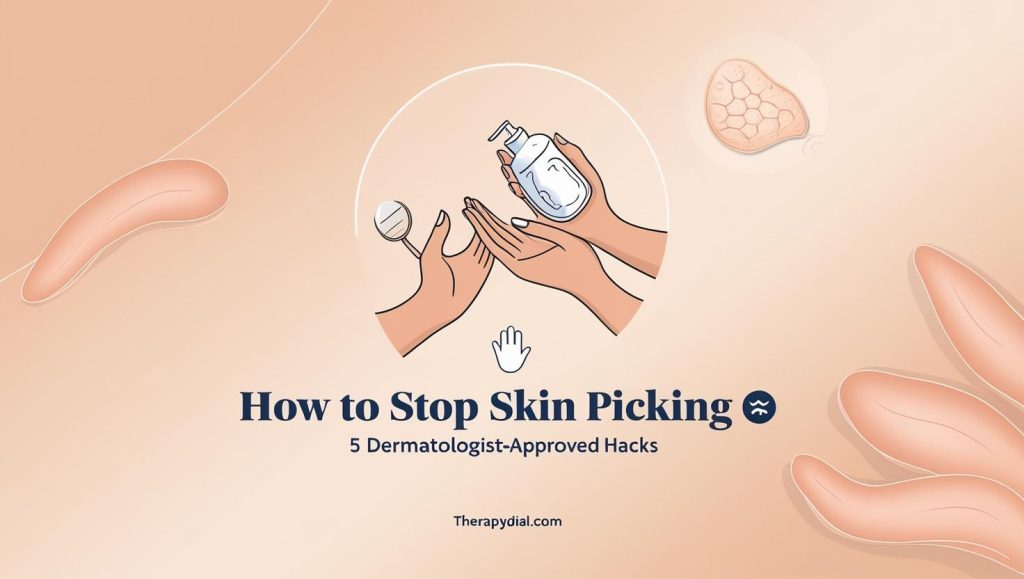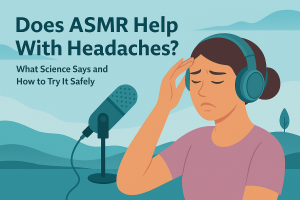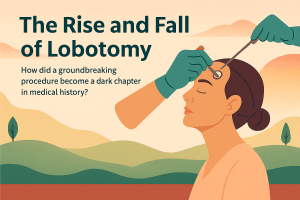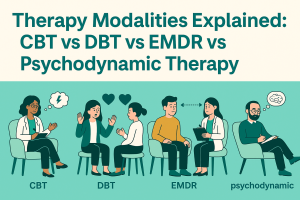What is Skin Picking and Why Do We Do It?
Have you ever caught yourself mindlessly picking at a pimple, scab, or bump—then kept going until it bled or left a mark? That’s more than just a bad habit.
For many, it’s a sign of dermatillomania, also known as Skin Picking Disorder—a body-focused repetitive behavior (BFRB) that can affect anyone, regardless of age or background.
Skin picking is often triggered by stress, anxiety, boredom, or even the desire for perfection. You see a flaw—real or perceived—and your brain goes into fix-it mode. Except the fixing never really fixes. You dig, pick, peel, or squeeze, only to end up with more damage, more shame, and more frustration.
Sound familiar?
You’re not alone. Studies estimate that 1 in 20 people struggle with skin picking to some degree. For some, it’s occasional. For others, it’s daily, compulsive, and deeply distressing.
But here’s the good news: dermatologists, therapists, and people who’ve been there have tools that actually help—and they’re simpler than you might think.
The Real Impact of Dermatillomania (Skin Picking Disorder)
Skin picking doesn’t just harm your appearance—it can damage your mental health, self-esteem, and quality of life. You might:
- Avoid mirrors
- Skip social events
- Wear long sleeves or makeup to hide wounds
- Struggle with infections or scarring
- Feel guilty or ashamed, even when you don’t understand why you can’t stop
This isn’t about “willpower.” It’s about understanding the urge and using smart, evidence-based strategies to interrupt the pattern. That’s exactly what this article is all about: 5 dermatologist-approved hacks that you can start using today.
Let’s break the cycle.

Understanding Skin Picking Behavior
Emotional and Environmental Triggers
Most people don’t pick at their skin because they want to—it’s often a reaction to an emotional or environmental trigger. These might include:
- Stress from school, work, or relationships
- Boredom during idle moments like watching TV
- Anxiety or restlessness that needs an outlet
- Looking in the mirror or under harsh lighting
- Touching skin texture while thinking or working
What starts as a way to “smooth out” or fix a bump becomes a ritual. You feel tension build, and picking provides a momentary release—followed by regret or embarrassment. This emotional rollercoaster reinforces the habit, making it feel impossible to stop.
How It Becomes a Habit Loop
Skin picking operates on a neurological feedback loop:
- Trigger (e.g., anxiety, blemish, boredom)
- Behavior (picking, squeezing, peeling)
- Relief or satisfaction
- Guilt or physical damage
- More stress, restarting the cycle
To break the loop, you need to intervene at multiple points—protect the skin, change the environment, and substitute healthier behaviors. That’s where the hacks come in.
Why It’s So Hard to Stop
Neurological Factors
Skin picking is often automatic, meaning you might not even realize you’re doing it. That’s because the behavior hijacks parts of the brain related to:
- Impulse control
- Sensory processing
- Emotional regulation
People with skin picking disorder often have heightened sensitivity to touch and texture. You notice tiny bumps or imperfections others wouldn’t.
Once you feel them, your brain says, “Fix this.” But instead of helping, your fingers create more problems.
Neurochemically, picking can release dopamine, a “feel-good” brain chemical, which reinforces the action. That’s why even when it hurts or leads to bleeding, the behavior continues—it’s literally wired into your reward system.
The Temporary Relief Cycle
In the moment, picking often brings relief. That relief reinforces the behavior, even though the long-term consequences (scars, shame, infection) are negative. This cycle is one of the reasons stopping skin picking is so hard—your brain is tricked into thinking it’s helpful.
But there’s hope. With a few targeted hacks, you can start to retrain your brain and your hands—one day, one decision at a time.
5 Dermatologist-Approved Hacks to Stop Skin Picking
1. Use Hydrocolloid Patches or Bandages
How They Work
Hydrocolloid patches are small, protective stickers that absorb fluid from pimples or open wounds and help them heal faster. More importantly—they act as physical barriers between your fingers and your skin.
Dermatologists recommend these for anyone struggling with picking because they:
- Cover tempting spots, removing visual triggers
- Prevent bacteria from entering open skin
- Flatten blemishes and reduce inflammation
- Satisfy the urge to “do something” without causing damage
Many patches are nearly invisible and can be worn under makeup or overnight. Some even contain acne-fighting ingredients like salicylic acid or tea tree oil.
When and Where to Apply Them
Apply patches to:
- Healing scabs or wounds
- Bumps or blemishes you’re tempted to pick
- Any “danger zones” you tend to target during stress
Keep a stash in your purse, desk, or bathroom. Use them proactively—not just after you’ve picked. If you know you’re stressed or heading into a situation where you tend to pick (like mirror time or bedtime), patch up in advance.
2. Keep Your Hands Busy With Fidget Tools
Best Fidget Substitutes for Pickers
Your hands aren’t the enemy—they just need a new job. One of the most effective ways to stop skin picking is to redirect your fingers with a safe, tactile substitute. Fidget tools are a game-changer because they satisfy the need for movement and sensory input without causing harm.
Recommended fidget items for skin pickers include:
- Textured silicone fidget toys (pop its, sensory rings)
- Therapeutic putty or slime (great for digging and squeezing urges)
- Worry stones or smooth crystals (help with thumb-finger stimulation)
- Cuticle-safe rollers or massage tools
- Chewelry or oral fidgets for those who pick lips or cheeks
The key is finding a tool that feels physically satisfying. Something you can roll, press, squeeze, or scratch. It doesn’t have to be fancy—it just has to give your hands something to do when your mind is idle or anxious.
How to Carry and Use Them Consistently
It’s not enough to just buy a fidget—it needs to be within reach at all times. Here’s how to build the habit:
- Keep one in every key location: bedside table, work desk, car console, couch armrest.
- Wear a fidget ring or bracelet—jewelry that doubles as a coping tool.
- Set reminders or visual cues to use them during “hot zones” (like watching TV or scrolling your phone).
When the urge to pick hits, grab the fidget before your fingers go to your skin. Even 60 seconds of redirected movement can help break the autopilot pattern and build new neural pathways over time.
3. Follow a Skincare Routine That Soothes and Protects
Calming Ingredients Recommended by Dermatologists
A good skincare routine doesn’t just help your skin heal—it can also reduce the urge to pick in the first place. Many pickers are triggered by texture: bumps, flakes, rough patches. So, treating the skin gently and consistently can make it less “tempting.”
Look for products with these dermatologist-approved ingredients:
- Niacinamide – reduces redness and inflammation
- Ceramides – repair the skin barrier
- Centella Asiatica (Cica) – promotes healing and soothes irritation
- Panthenol (Vitamin B5) – hydrates and softens
- Aloe Vera – cools and calms the skin
- Salicylic Acid or Benzoyl Peroxide – treats acne (use sparingly!)
Avoid harsh scrubs, alcohol-heavy toners, or popping tools—they increase the urge to pick by aggravating skin and making blemishes more noticeable.
Why Skincare Can Reduce the Urge to Pick
When your skin feels calm, hydrated, and smooth, there are fewer triggers to act on. Plus, following a skincare routine builds mindful habits that replace picking time with self-care time. Instead of squeezing a pimple, you’re applying a healing serum. Instead of scanning your face for imperfections, you’re patting in moisturizer.
And here’s the real secret: when you treat your skin like something worth protecting, your brain starts to agree.
Tips:
- Use calming music or ASMR during your routine to create a spa-like atmosphere.
- Treat skincare like a ritual, not a punishment.
- Apply products with soft brushes or sponges if touch is a trigger.
4. Set “Mirror Time Limits” and Reduce Lighting Triggers
How Environment Affects Picking Behavior
Mirrors can be one of the most dangerous zones for skin picking. You walk in to wash your hands or do your skincare, glance at your face, and suddenly… 20 minutes have gone by.
Your skin’s red, irritated, and you feel worse than before.
Why? Because bright lighting, up-close mirrors, and free time combine to create a high-risk environment for people prone to picking.
Dermatologists and psychologists agree: limiting mirror time and adjusting your space is crucial.
Creating a Low-Stimulus Bathroom or Vanity
Try these hacks:
- Use warm, diffused lighting instead of bright white bulbs that highlight every pore.
- Set a timer when entering the bathroom for skincare—5 minutes max.
- Cover your mirror during high-risk times (masking tape, dry erase board, even a towel).
- Use distance mirrors only—no magnifying mirrors that make blemishes feel urgent.
- Keep your bathroom tidy and tool-free—if your tweezers, mirrors, or extraction tools are in plain sight, they become temptations.
Bonus: Use sticky notes with affirmations like “You’re healing,” “Leave it alone,” or “Hands down” as gentle reminders on your mirror or bathroom cabinet.
5. Track Patterns and Replace With Healthier Coping Tools
Behavior Awareness and Journaling
Awareness is half the battle. Most people with Skin Picking Disorder don’t even realize how often they engage in the behavior. Tracking helps uncover patterns, triggers, and progress.
Use a behavior log or journal to answer:
- What time did I pick today?
- Where was I (bedroom, car, mirror)?
- What was I feeling before/during/after?
- What was I doing (watching TV, working, thinking)?
You can also use apps like:
- HabitAware
- SkinPick
- BFRB Tracker
Once you’ve identified your patterns, you can plan around them. If you always pick during Zoom calls, try holding a fidget. If you pick in bed, wear gloves or apply lotion to your hands to create friction.
What to Do When the Urge Strikes
Instead of fighting the urge head-on, redirect it with a “soothing swap”:
- Fidget tool → to keep hands busy
- Ice cube → to reset your focus with cold sensation
- Journal → to vent or process emotion
- Breathing app → to self-regulate stress
- ASMR video → to calm your nervous system
The key isn’t to suppress the urge—it’s to interrupt it and rewire the brain with a more nurturing behavior.
When to Seek Professional Help
Signs You Might Need a Therapist or Dermatologist
If skin picking is causing:
- Bleeding, infection, or scarring
- Distress or guilt you can’t shake
- Interference with school, work, or relationships
- Avoidance of mirrors, photos, or social events
…it’s time to ask for help.
You’re not weak. You’re not weird. You’re dealing with a treatable condition, and professionals can guide you to tools that work.
Start with:
- A therapist trained in CBT or HRT (habit reversal therapy)
- A dermatologist for skin care and physical healing
- Support groups for lived experience, empathy, and accountability
Best Therapies for Skin Picking Disorder
Evidence-based therapies include:
- CBT: Reframes thought patterns and behaviors
- HRT: Teaches substitution and awareness
- ACT (Acceptance and Commitment Therapy): Helps reduce shame and increase mindfulness
- DBT (Dialectical Behavior Therapy): Builds emotional regulation
Therapy works best with consistency and a non-judgmental space to process what drives your behavior.
Support and Resources for Ongoing Recovery
Online Communities and Mobile Apps
You’re not alone—and community support can make a massive difference in managing and healing from skin picking. Talking to others who understand what you’re going through creates a sense of safety, accountability, and hope.
Here are trusted places to connect:
- Reddit: r/Dermatillomania, r/BFRBs
- Instagram/TikTok: Search #BFRB, #skinpickingrecovery, #dermatillomania
- The TLC Foundation for BFRBs: Offers forums, support groups, webinars, and treatment resources
- Facebook Groups: Private, moderated communities where you can share your story and learn from others
Helpful mobile apps:
- SkinPick App – Offers guided therapy and behavior tracking
- BFRB Journal – Helps track urges, triggers, and daily wins
- HabitAware Keen2 – A wearable device that alerts you when you’re picking
The more supported you feel, the easier it becomes to face the habit with compassion and strategy.
Long-Term Strategies for Healing Skin and Habits
Stopping skin picking is a process—not an overnight switch. Healing happens in layers, just like your skin. Here’s how to stay the course:
- Celebrate small wins: Even 1 less episode a day is progress.
- Be gentle with setbacks: One rough day doesn’t erase the good work you’ve done.
- Document your journey: Photos, journals, or a calendar to show how far you’ve come.
- Keep evolving your toolkit: Try new fidgets, update your skincare, switch up your triggers.
- Build a lifestyle that reduces stress: Sleep, hydration, movement, mindfulness—all of it helps.
And remember, healing doesn’t mean being perfect. It means feeling more in control, less ashamed, and more connected to your body in a loving, supportive way.
Conclusion
Skin picking is more than a habit—it’s a coping mechanism, a nervous release, and often a silent struggle. But it’s not hopeless. With awareness, smart tools, and support, you can retrain your brain, heal your skin, and break the cycle.
Whether it’s slapping on a hydrocolloid patch, squeezing a fidget cube, or dimming your bathroom lights, every small action adds up. The key is consistency—and treating yourself with the same compassion you’d give a loved one.
You’re not “gross,” weak, or broken. You’re human. And you deserve to feel good in your skin—literally.
FAQs
What’s the fastest way to stop skin picking?
While there’s no magic fix, the fastest progress comes from combining barriers (like hydrocolloid patches), fidget tools, and behavior tracking. Awareness + redirection = results.
Can skincare alone fix the habit?
Not entirely. Skincare helps soothe triggers and speed up healing, but stopping the behavior requires mental tools like habit reversal therapy and coping strategies.
Is skin picking a form of OCD or anxiety?
It’s categorized under “Obsessive-Compulsive and Related Disorders,” but it’s distinct. It often co-occurs with anxiety and OCD, but has its own neurological and emotional patterns.
How do I help a child or teen with skin picking?
Be gentle and curious, not critical. Help them identify triggers, offer tools (like fidgets or bandages), and consider therapy. Don’t punish—it often makes the behavior worse.
Will my skin ever fully heal after years of picking?
In many cases, yes—especially with consistency, skincare, and leaving the skin alone to regenerate. Some scars may remain, but many fade over time or respond well to dermatological treatments.



